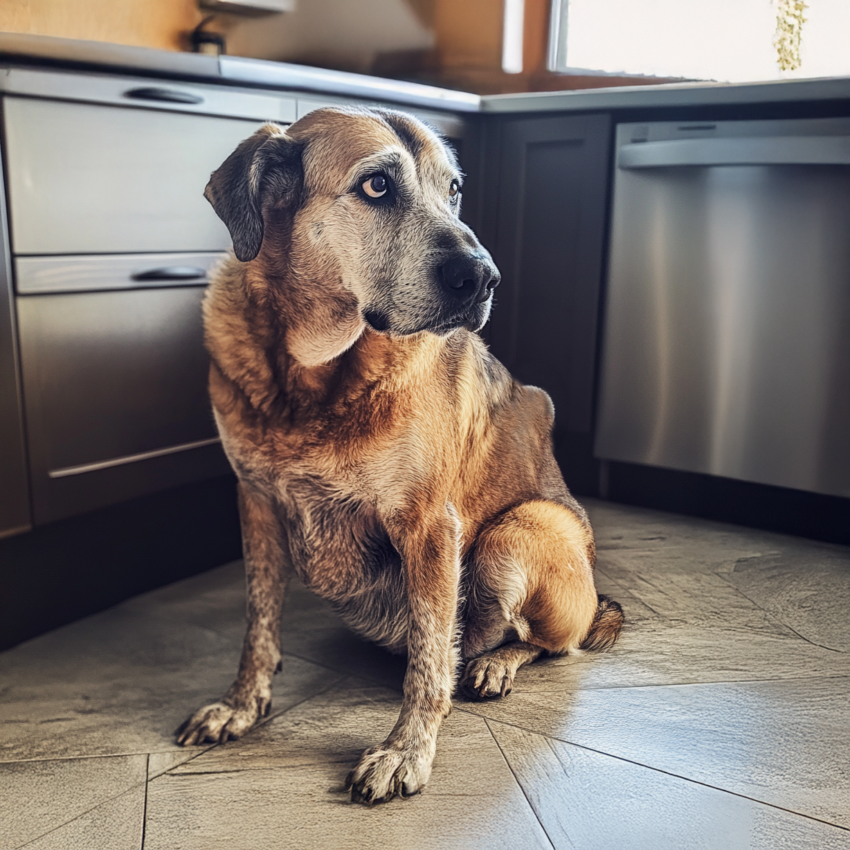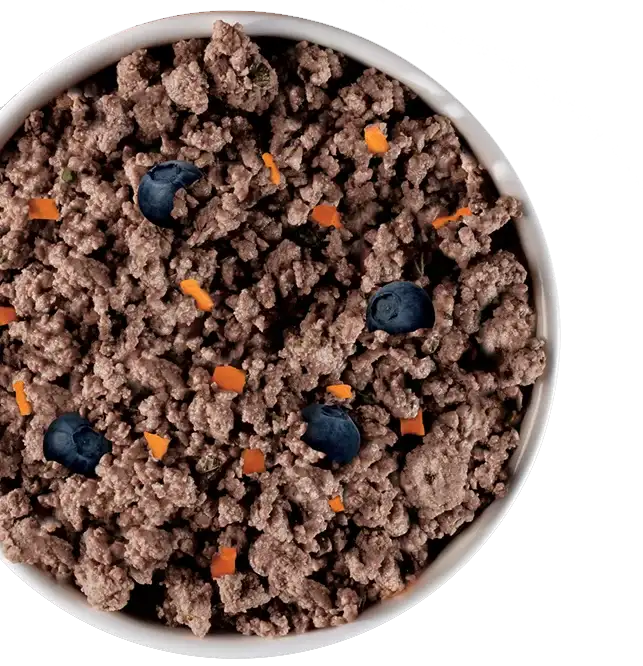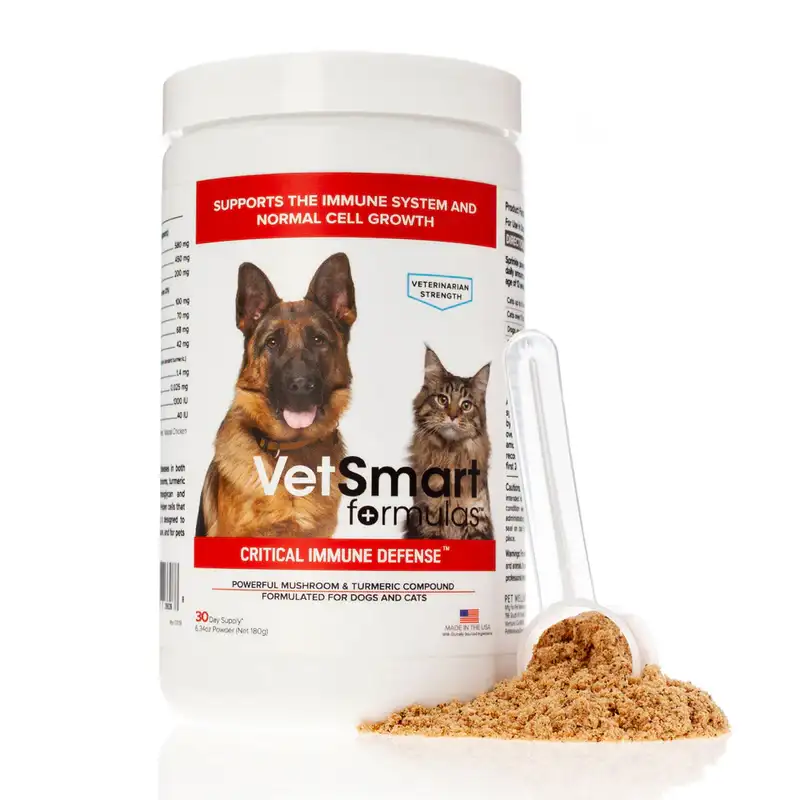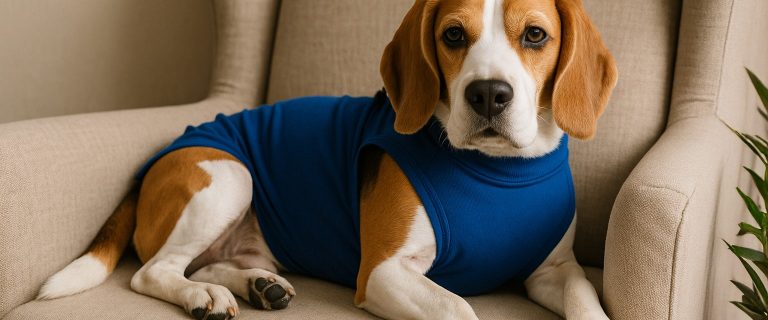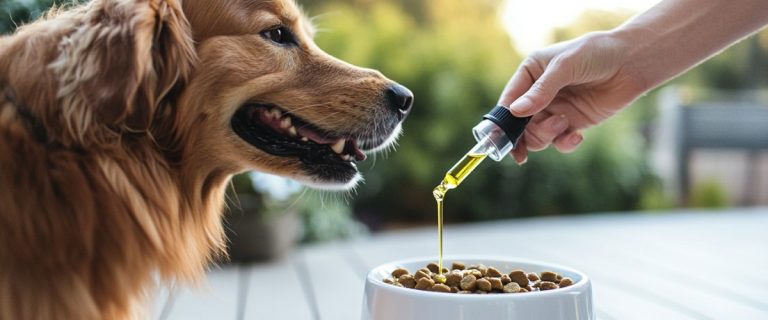You’re petting your dog and suddenly feel a squishy lump under their skin. Cue instant panic, right? Before you spiral, take a breath. Chances are, you’ve just discovered a fatty tumor, also known as a lipoma—a benign growth that’s actually super common in dogs, especially as they age.
Let’s break down what these lumps are, why they show up, and what you can do about them—both medically and naturally.
What Is a Fatty Tumor in Dogs?
A lipoma is a soft, slow-growing mass made up of fat cells. These tumors usually develop just beneath the skin, though they can sometimes grow deeper between muscles or even inside the body (though that’s rarer).
The key thing to know? Lipomas are almost always benign—meaning they’re not cancerous and won’t spread. That said, they can get large and uncomfortable or show up in inconvenient places, which might require action.
Which Dogs Are Most at Risk?
While any dog can develop lipomas, certain breeds and health conditions make them more likely:
✅ Middle-aged to senior dogs
✅ Overweight dogs
✅ Breeds like Labrador Retrievers, Doberman Pinschers, Boxers, and Weimaraners
✅ Spayed or neutered dogs, possibly due to hormonal shifts
In other words, if your pup is getting up there in years and has packed on a few extra pounds, a lipoma isn’t all that surprising.
Are Fatty Tumors Dangerous?
In most cases, nope. They’re painless, don’t affect organs, and typically don’t bother your dog much—if at all. But there are exceptions:
➡️ If the tumor grows large enough to interfere with walking or movement
➡️ If it’s near a vital area like the throat, armpit, or groin
➡️ If it’s rapidly growing or feels different from typical lipomas
➡️ If it’s ulcerated, bleeding, or changing color
When in doubt, always get new lumps checked by your vet. Don’t try to self-diagnose.
How Are Fatty Tumors Diagnosed?
A quick vet visit can give you peace of mind. Your vet will likely do a fine needle aspiration (FNA)—basically, they insert a small needle into the lump and extract some cells. Those cells are then examined under a microscope.
If the lump seems suspicious, your vet may recommend a biopsy or even imaging (like X-rays or ultrasounds) to rule out more serious conditions like soft tissue sarcomas.
Traditional Treatment for Lipomas
⚕️ When to Remove a Fatty Tumor
Most lipomas don’t need to be removed, but surgery might be recommended if:
- The tumor is interfering with mobility or function
- It’s growing rapidly or causing discomfort
- It’s in a sensitive area like near the throat or spine
- It’s pressing on internal organs (in rare deep lipoma cases)
What Surgery Involves
Lipoma removal surgery is usually simple and low-risk. Most lipomas don’t have a strong blood supply, so they’re relatively easy to “scoop out.” Depending on size and location:
- Small tumors may only require local sedation and a quick outpatient procedure
- Larger or internal tumors may need full anesthesia and a longer recovery
Your dog may need a few days of rest and possibly an e-collar to keep them from bothering the stitches, but the recovery time is generally short and smooth.
Can Fatty Tumors Be Treated Naturally?
Okay, let’s talk about the natural remedy rabbit hole for a second. If you’ve Googled “how to shrink a dog’s lipoma naturally,” you’ve probably seen everything from turmeric to castor oil to weird clay wraps. So what’s legit and what’s just snake oil?
Important Disclaimer:
There’s no proven natural remedy that will shrink or eliminate lipomas completely. That said, some dog owners have seen anecdotal improvements with certain lifestyle changes and supplements. Here are a few options you can try—with your vet’s okay, of course:
1. Improve Your Dog’s Diet
Since lipomas are made of fat, it makes sense that excess fat in the body might contribute. A healthier diet may not make existing tumors disappear, but it might slow new ones from forming.
Tips:
- Switch to a high-quality, low-carb dog food
- Avoid fillers like corn, wheat, and soy
- Opt for lean proteins (turkey, chicken, fish)
- Consider adding omega-3 fatty acids (from fish oil or krill oil) to reduce inflammation
Here are a few options that we love:
|
Every plan provided by The Pets Table ensures a balanced diet for your dog, packed with ingredients they will adore, all reviewed by their Board-Certified Veterinary Nutritionist. The only carbs come from the veggies. |
Raised Right works with veterinarian Dr. Karen Becker to craft limited ingredient recipes that are high in protein and low in carbs. Most of their recipes have less than 2% carbs because they don’t use any fillers. |
Premade raw meals, delivered to your doorstep. A balanced raw diet for dogs can be tailored to your pet's size, age, and tastes. They've made it easy to get started with a raw diet for your dog in just a few clicks. |
Every plan provided by The Pets Table ensures a balanced diet for your dog, packed with ingredients they will adore, all reviewed by their Board-Certified Veterinary Nutritionist. The only carbs come from the veggies.
Raised Right works with veterinarian Dr. Karen Becker to craft limited ingredient recipes that are high in protein and low in carbs. Most of their recipes have less than 2% carbs because they don’t use any fillers.
Premade raw meals, delivered to your doorstep. A balanced raw diet for dogs can be tailored to your pet's size, age, and tastes. They've made it easy to get started with a raw diet for your dog in just a few clicks.
Help Your Dog Maintain a Healthy Weight
Overweight dogs are far more likely to develop lipomas. Regular, gentle exercise and portion-controlled meals go a long way in reducing that risk. Plus, keeping your dog fit helps their joints, heart, and mood, too.
Mushrooms
Medicinal mushrooms like Turkey Tail, Reishi, and Maitake are often used for their immune-boosting and anti-inflammatory benefits. While they won’t “shrink” lipomas directly, they can support your dog’s overall health, potentially helping slow tumor growth and improve fat metabolism.
You’ll find all of these (along with other beneficial ingredients) in Critical Immune Defense for Dogs & Cats by PetWellnessDirect. It’s formulated specifically for pets and aimed at enhancing immune function and systemic health. While it’s not a surefire fix for lipomas, many of the reviewers swear that it helped shrink their dogs’ lumps.
Protect Your Pet from Life-Threatening Disease. A safe, all-natural immune booster that can add years to the life of your pet. Made in the USA.
✔︎ Boosts immune system
✔︎ Reduces inflammation
✔︎ Promotes normal cell growth
✔︎ Protects against toxins in food, water & environment
✔︎ Supports long-term health in dogs and cats
Natural Topical Treatments (Use With Caution)
Some pet parents try massaging small lipomas with natural oils that have anti-inflammatory properties, like:
- Castor oil (may improve circulation and lymphatic flow)
- Turmeric paste (anti-inflammatory but can stain everything)
- Frankincense essential oil, diluted properly (some claim it supports cellular health)
⚠️ Never use essential oils undiluted or without your vet’s advice. Dogs are more sensitive than humans to certain compounds.
Lymphatic Drainage Massage
Some holistic vets recommend gentle lymphatic massage around the lipoma to encourage drainage and better circulation. While not scientifically proven, it’s non-invasive and can be relaxing for your dog if done correctly. Check out the video below for tips on how to do it.
When to Worry: Signs a Lump Isn’t a Lipoma
Not every lump is a fatty tumor. Be especially cautious if the mass:
❌ Is hard, immobile, or irregularly shaped
❌ Seems painful to the touch
❌ Grows rapidly or changes color
❌ Is accompanied by weight loss or lethargy
These could indicate a malignant tumor, like a mast cell tumor or sarcoma, and require immediate veterinary attention.
Bottom Line: Don’t Panic—But Don’t Ignore It Either
Finding a fatty tumor on your dog is scary at first, but try not to stress. In most cases, it’s nothing to worry about. Still, always get new lumps checked out by a vet to rule out anything more serious.
If it is a lipoma, you’ll have options—whether you choose to monitor, remove, or explore natural support strategies. And remember: a lumpy dog is still a lovely dog.
Author
-

Gary is a serial entrepreneur, who built up an e-commerce company in the home improvement space to $40+ million a year in sales before exiting 5 years ago to pursue other projects. Gary combined his business acuity with his love for dogs and launched Vet Naturals, a natural supplement brand dedicated to helping dogs live the best life possible, and Pawzitivity Pets, a pet-centric publishing company that includes DogVills.com, SeniorPups, TechnoBark, and AlphaTrainedDog.
View all posts
